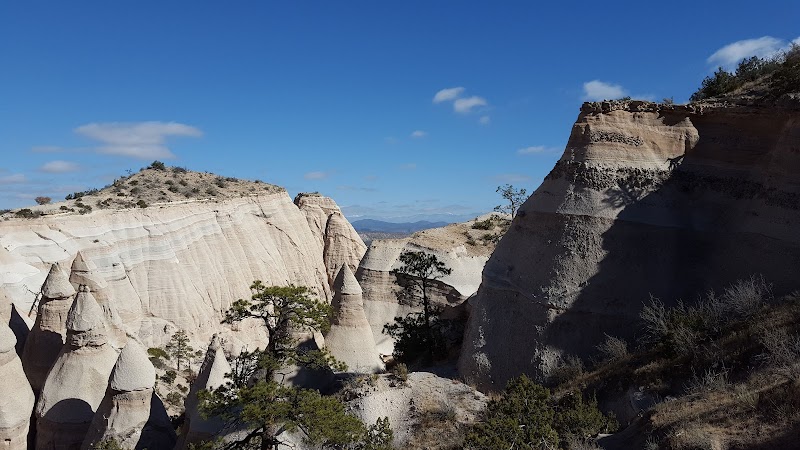
Experience Tesuque Pueblo Feast Day: A Living Celebration of Culture and Tradition
Tesuque Pueblo Feast Day in October offers a unique opportunity to witness traditional dances, ceremonies, and community spirit at the heart of New Mexico’s indigenous culture. This guide provides practical tips to prepare for a visit that balances cultural immersion with accessible adventure.
Arrive Early to Secure Parking
Limited parking along narrow pueblo roads means arriving early ensures you won’t miss the start of ceremonies or have to park far away.
Wear Sturdy Footwear
Dusty, uneven terrain calls for shoes with good traction rather than sandals or dress shoes to stay comfortable and safe throughout the day.
Pack Layers and Hydration
October days vary between warm sun and cool breezes; bring water and layers to adjust easily to changing conditions and altitude effects.
Respect Photography Restrictions
Certain dances and ceremonies prohibit photography. Observe signage and guidelines to honor cultural sensitivities.
Experience Tesuque Pueblo Feast Day: A Living Celebration of Culture and Tradition
Every October, Tesuque Pueblo in New Mexico opens its doors to a vibrant feast day that offers a rare glimpse into the enduring culture of its people. This annual event is not just a festival—it’s an invitation to engage with a community fiercely protective of its heritage. The air hums with the rhythm of traditional drumming and singing, while colorful dancers in intricate regalia move with purpose, respecting customs that have persisted for centuries.
Located just north of Santa Fe, Tesuque Pueblo balances accessibility with an authentic cultural experience. Visitors won't find over-commercialized trails or tourist traps here; instead, they encounter a space where nature and ceremony intertwine. Walking through Tesuque during the feast day, the scent of piñon wood fires mingles with the cool October breeze, and the vibrant chatter around shared meals draws attendees closer.
Planning your visit means understanding the practical rhythm of the day. The ceremonies usually start mid-morning, with dances lasting through late afternoon. It’s best to arrive early to secure parking near the pueblo’s entrance, as the narrow winding roads accommodate only a limited number of vehicles. Comfortable, sturdy footwear is a must—the pueblo’s terrain is dusty and uneven, reflecting its natural roots rather than paved paths.
Hydration is critical, especially at altitude—Tesuque Pueblo sits around 6,700 feet, where the thin air can sneak up on you. Bring water and dress in layers; October in Northern New Mexico swings between sun-warmed afternoons and brisk mornings.
Beyond the feast day itself, the area offers hikes that lead into the Sangre de Cristo foothills. Trails range from moderate to challenging, inviting explorers to witness panoramic views of desert scrub and piñon-juniper forests that seem almost to breathe alongside you. The indigenous landscape, fiercely itself, demands respect—not just for its aesthetics but for its significance to the people who call it home.
For a richer experience, take the time to explore Tesuque’s local galleries and pottery studios before or after the feast. Many artists live within the pueblo and offer insights into their craft’s cultural roots.
Ultimately, Tesuque Pueblo Feast Day is not simply an event to attend; it’s an opportunity to step into a community’s ongoing story. Practical preparation meets spirited participation here, and the reward is a striking blend of history, art, nature, and human connection.
Nearby Trips
All Adventures
Boat Charters
Water Activities
Adventures near Tesuque, New Mexico
Discover the unique and memorable adventures that make Tesuque, New Mexico special.
Frequently Asked Questions
Can visitors participate in the dances or ceremonies?
No, the dances and ceremonies are reserved for community members and invited guests. Visitors are welcome to observe respectfully and enjoy cultural demonstrations.
Are there any restrictions on photography during the Feast Day?
Yes, some ceremonial dances and rituals prohibit photography to respect the community’s privacy and traditions. Signs and requests from organizers should be followed carefully.
What is the best way to reach Tesuque Pueblo from Santa Fe?
Driving is the most convenient method. It’s approximately a 15-minute drive north on NM-592 and NM-76. Limited parking means arriving early is crucial.
Are there any fees or permits required for attending the Feast Day?
Generally, the Feast Day is open to the public and free to attend, but donations to the pueblo or artisans are appreciated if you participate in purchasing crafts or food.
What wildlife might I see around Tesuque Pueblo during the festival?
While the area is primarily cultural, surrounding woodland areas are home to mule deer, coyotes, and a variety of birds like Steller’s jays that call the piñon-juniper forests home.
Are there opportunities to explore hikes or natural areas near the Feast Day?
Yes, the nearby Sangre de Cristo foothills offer several moderate trails. The Tesuque Creek Trail is popular for its mix of forested stretches and open views.
Recommended Gear
Comfortable Hiking Shoes
Protect your feet from uneven, dusty, and sometimes rocky pueblo grounds to maintain comfort all day.
Layered Clothing
Temperatures vary between crisp mornings and warm afternoons—layers allow flexible adjustment.
Water Bottle
Staying hydrated at over 6,700 feet altitude is critical to avoid fatigue and altitude sickness.
Sun Protection (hat, sunscreen, sunglasses)
The New Mexico sun can be intense at altitude, even in cooler months, requiring adequate protection.
Local Insights
Hidden Gems
- "The pueblo's small local pottery studios offer intimate views of Indigenous art in progress."
- "A little-known viewpoint south of the pueblo provides sweeping vistas of the Rio Grande Valley without the usual crowds."
Wildlife
- "Mule deer often graze in open areas at dawn and dusk."
- "Listen for the familiar call of the mountain chickadee and watch for Steller’s jays darting among the trees."
History
"Tesuque Pueblo dates back centuries and remains vibrant with ongoing traditional governance and ceremonies, making this feast day a continuation—not a reenactment—of a living culture."
